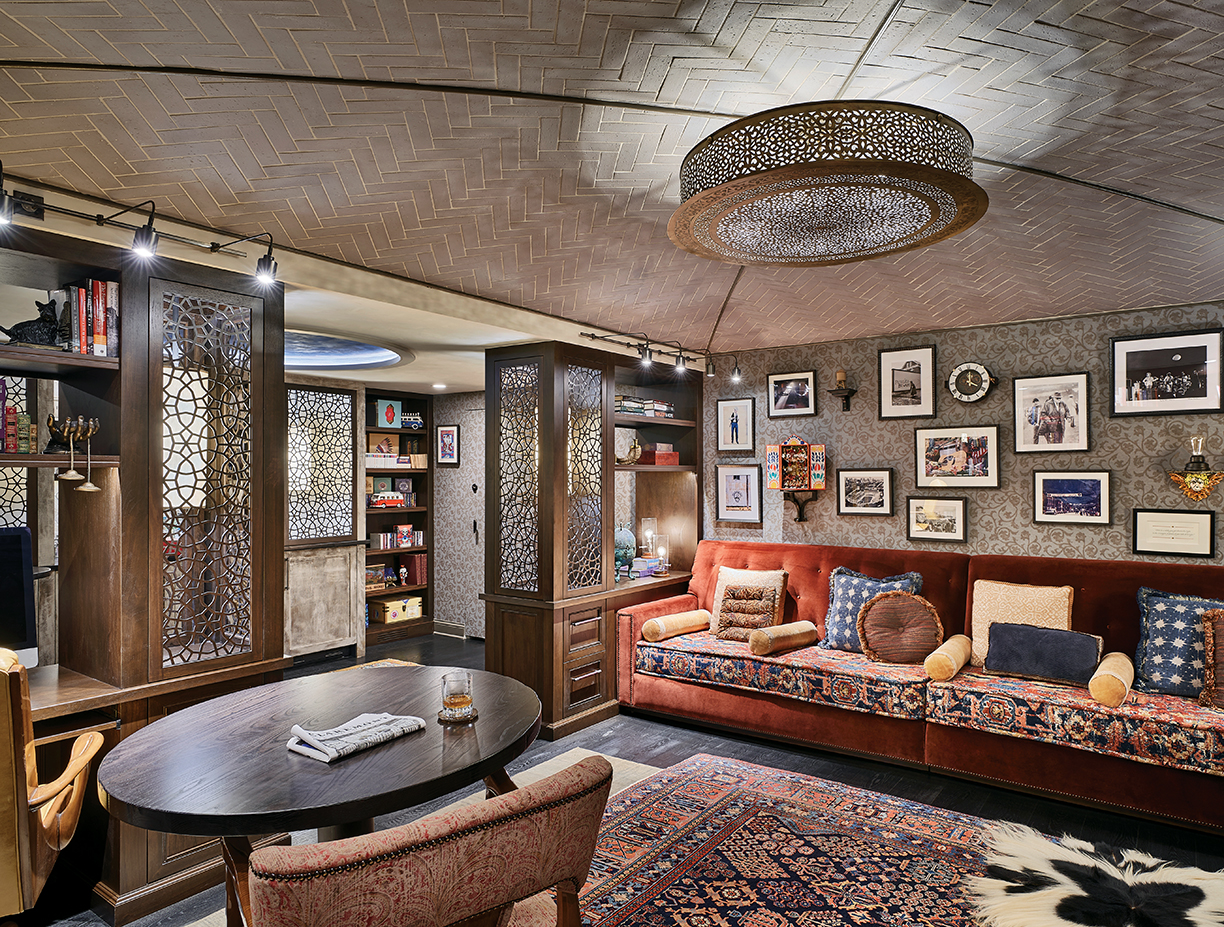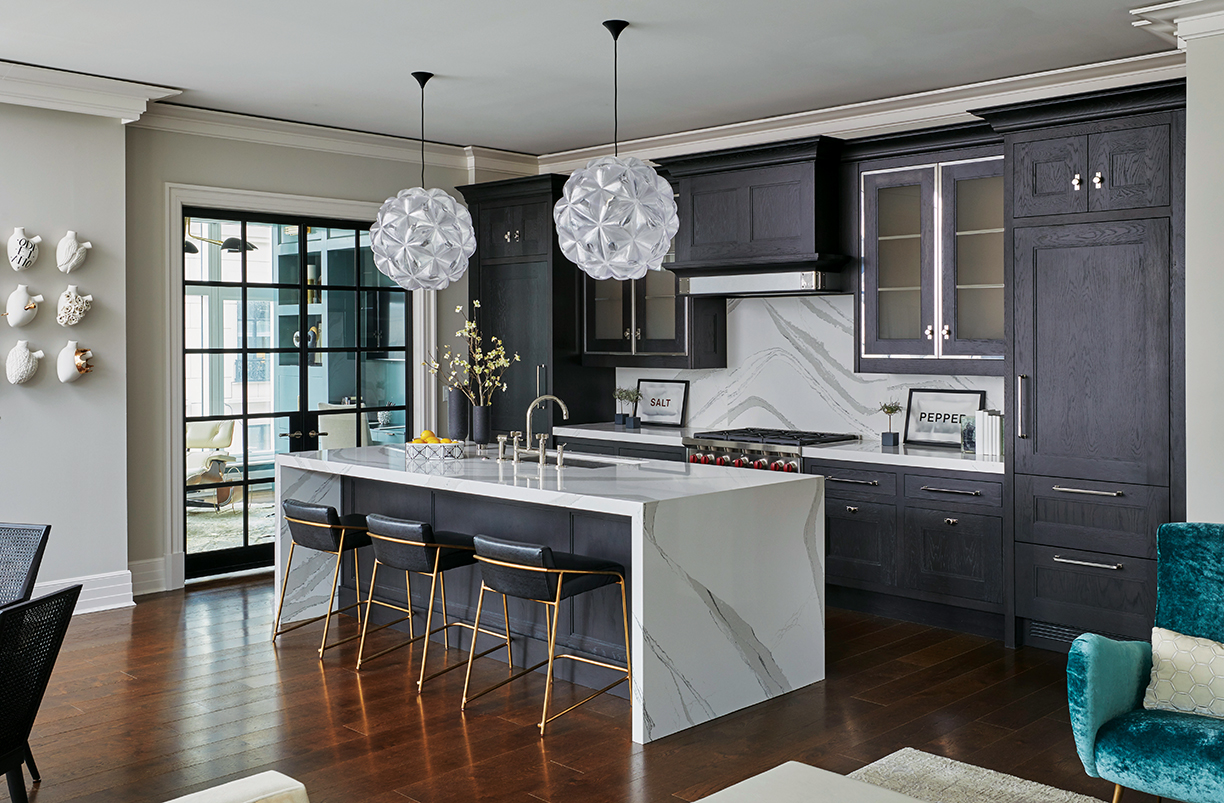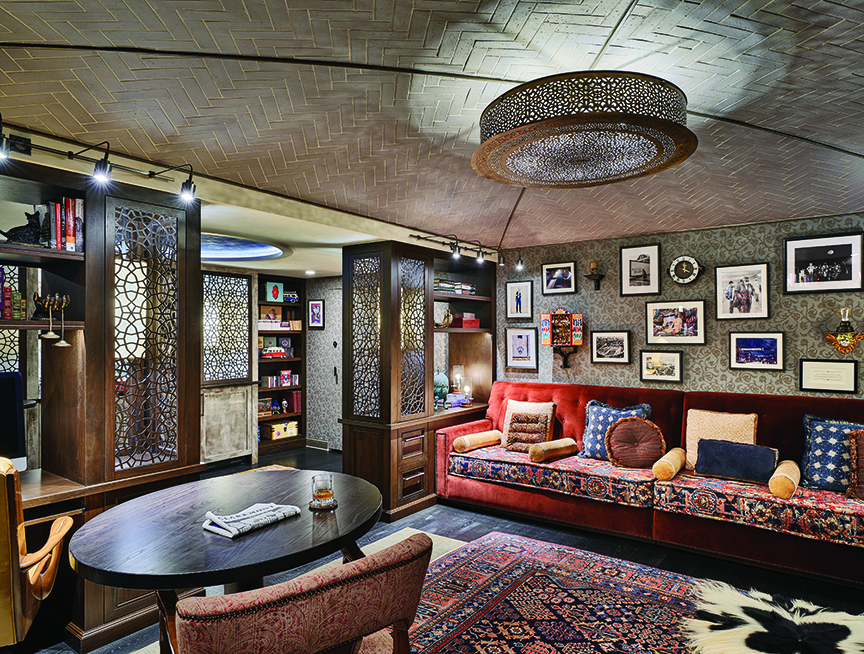The trends changing houses in 2020 and beyond.
By Camilla McLaughlin
New values, shifting demographics and technology are all transformative agents in 2020, and each will shape real estate and design well into the next decade. Some, such as outdoor living, are not new, while others, including the importance of ancillary spaces or a desire for slightly smaller but highly customized homes, are just getting underway. Farmhouse is out; contemporary, along with modern interpretations of traditional styles, is finding favor with architects and home buyers. Attitudes about what’s important in a home beyond an open floorplan, and even the open concept itself, are being reconsidered and revised. Color is back. Experts tell us the passion for grey and all-white kitchens is waning, although in practice designers also say neutrals still dominate.
Got all of that?
Even the term “move-up buyer” has a new meaning. “Move up doesn’t necessarily mean move into a bigger home as it did for previous generation,” explains Leigh Spicher, national director of design studios for Ashton Woods. “Today’s move up buyers expect quality and are willing to invest in special features in their home.” For upscale owners, preferences are likely to lean toward diversification in favor of several properties in different locations rather than a large estate home.
Each year, The Best in American Living program (BALA), an annual design competition held by the National Association of Home Builders, showcases award-winning design and architecture and pinpoints current and growing trends. Awards this year, based on homes built in 2019, showcased a range of styles from midcentury modern to transitional to contemporary expressions rooted in traditional styles or regional aesthetics.
Another change, according to Don Ruthro , principal at Dahlin Group Architecture Planning and this year’s judging chair, is more homes with the same style inside and out, which he says conveys a greater sense of authenticity.
Even in production homes architects are pushing for more character and uniqueness with thoughtful, well edited design elements. Well edited, according to BALA, means a genuine purpose of place and points of interest that draw the eye across the facade without all of the fussiness of past decades.

Curated design details are another design trend BALA judges highlight. “It’s clear that buyers want their home to feel personalized to their taste. From ceiling textures to shelving choices to mullion size. Every detail matters, and today’s educated buyers won’t settle for anything less,” they explain.
Other trends play into the desire for personalization. Anything that adds texture is on trend, especially wallpaper. Also enhancing personalization are unique applications of wood to highlight forms and also warm up interiors. Compared to prior years, the use of wood, often a dark hue with a matt fi nish, mixed with other surfaces, was very much in evidence in homes, new and remodeled, constructed to showcase current trends at the International Builders Show. Adding to the depth created by an overlay of textures in a home is the use of mixed metal finishes, with gold tones very much in evidence.
No facets of design are left to chance or convenience, even lighting. “Like other design details, just installing what’s on hand without added thought about placement just won’t fly with the 2020 buyer,” further advise BALA judges. Curated design details, personalized lighting design and texture were all highlighted as trends buyers can expect to see in homes over the next few years.
Even though kitchen, great room and dining — casual or formal — combined into a central living space continues to dominate, how that space is organized and expressed in an overall fl oorplan is slowly evolving. “Open space plans for the family room, kitchen, and dining area are still going strong. Our challenge in open plans is how to defi ne each space and give it some separation while still maintaining the overall open feel,” says Chicago designer Donna Mondi.
In California, designer Christine Markatos Lowe says the open plan is going strong, and perhaps the biggest change has been the addition of a second functional space to kitchens. For higherpriced homes, the presence of a back kitchen, whether a full-blown kitchen, a large walk in pantry or a butler’s pantry, has become a must have, central to keeping the main kitchen streamlined and clutter free.
Colorful kitchens? Maybe.
Examples at the national kitchen and bath industry show refl ected forecasts calling for color to punch up kitchens. Dark blues and earthy greens combined with wood finishes often clad lower cabinets and islands. Still, a number of designers express reservations regarding too much color. Wood cabinets continue to be on trend, mixed with other finishes.
“There has been a shift back into furniture-style cabinetry, exposed appliances (there’s always a place for LaCornue!), and especially statement marble countertops. European influences have made their way into the modern kitchen and I couldn’t be happier,” adds Mondi.
Another trend in renovations, Lowe says, is to open sightlines so rooms feel more connected to each other but still have their own language. “So it’s a combination of both things we’re seeing.”
“The main living spaces are getting bigger and more integrated with each other, but a good architect will design in such a way so they feel like individual spaces even though it’s part of one room,” says Bob Zuber, AIA, who is a partner at Morgante Wilson Architects in Evanston, Illinois.

Tricked Out Extras
Chances are what makes a house special for most buyers is not the number of bedrooms or even a great open plan but extras, what K. Tyler, also a partner and head of Interior Design at Morgante Wilson, dubs ancillary spaces. From tricked out mudrooms and laundry rooms to glass-enclosed wine rooms to pantries and second kitchens, what might be extras are essentials to buyers often shaping a unique living experience and often tilting them in favor of a certain house or floorplan. Offices, dens and studies will continue to be important additions to open plans. Nine times out of 10, homes with these features are going to be preferred over ones that just have big rooms, says Tyler.
Signature front entries are also gaining prominence. Expect to see continued emphasis on front entries. Foyers are designed to be functional but also to make a dazzling first impression.
Preferences for these features and quality over square footage extend to a range of price brackets. According to the National Association of Home Builders annual survey of buyer preferences, more buyers overall are likely to choose less square foot but higher quality homes with desirable features such as large walk-in master closets and energy efficient windows and lighting over large homes with fewer features.
Innovative materials continue to be important change agents. Consider outdoor living, one of the most transformative trends of the last decade. The modest pool and patio is now an array of open air venues and outdoor rooms. Pools and fire features are equally artful and functional. Rather than just an amenity tacked on to the house, outdoor connections are now the main orientation and organizing element for plans. Transitions between the two are hardly noticeable thanks to new materials and finishes, extending flooring beyond interiors. Master bedrooms morph into full blown retreats with their own outdoor spaces.
Innovative plans further bring green spaces deep into the home via interior courtyards. Expect to see more ways to bridge inside with outside as the decade progresses. Most recently, super large panes of glass and larger glass doors, further enhance visual connections and light-filled interiors. In most regions of the country, an indoor/outdoor sync is considered a “must have” for luxury, and there are no indications the penchant for outdoor connections will diminish. Among BALA trends, expansive largeformat windows along with sophisticated indoor/outdoor connections figured prominently.
Thinking Long Term
Beginning with the recovery, the tenure of homeownership increased. Instead of the 4.21-year average, typical from 2000 to 2007, ownership extended to 8 years or longer, hitting a record high in the end of 2018, with some cities — Boston, San Francisco and Hartford — charting tenures of 10 years or more. Whether or not this is a trend worth watching or simply a blip on the charts remains to be seen, but it is a solid indicator of changing attitudes toward home that spills over into design, interiors, even furnishings. Increasingly owners in almost all price brackets are thinking long term and lifestyle when it comes to their homes.
Resale seems to have moved to the back burner. Instead, consumers look for features and fi nishes that uniquely sync with and enhance their lifestyle. “I would say people are tailoring the house more specifically towards they way they want to live,” explains Zuber, noting sometimes those same features will also enhance resale.
According to Ashton Woods’ 2020 design trends survey, 86 percent of today’s buyers said home personalization is important.
Another indication of consumers anticipating longer ownership is growing interest in fl exible spaces and also in accommodating a range of ages. The term flexible spaces is taking on a new meaning. Instead of extra footage for a mancave or teen hangout, it’s viewed as versatile rooms that can change over time, explains Spicher. Perhaps a nursery today and a home o ce tomorrow. Or as many owners (55 percent in Ashton Woods Design survey) say, space that can transform into additional living space in the future for an aging family member or boomerang children.
More clients even in the 40s are looking to use the house when they are older and are planning to these accommodations with wider doors and space for an elevator shaft, say Tyler and Zuber.
Smart Home Challenges
In the next decade, smart home technology will change homes more than any other factor. Already new homes beyond a certain price point include a range of apps and devices, particularly in the kitchens, where manufacturers are already adding connections among appliances such as the hood with a range top. Also, voice control. Some brands also incorporate technology that enables some repairs to be made remotely. “What’s exciting is that every passing second, we get one step closer to a context-aware smart home. Manufacturers are pushing the boundaries. Developments in the areas of sensing technology and AI will result in appliances, fi xtures and systems that automatically respond and adapt to our home and environment changes,” says Kate Bailey, senior director of Category Management at Ferguson Enterprises.
“It’s not so much about new things as it is about things getting smaller, faster, lighter better integrated, so they get to the point where smart becomes livable and something you want to put in your homes,” says Melissa Morman, client experience officer at Builders Digital Experience.
Looking ahead, the key, the most transformative feature will be the development of an operating system that will integrate diverse function which will enhance integration and connection of devices and enable a home to further adapt to changing conditions.
Also on the horizon is a desire for homes to be a nurturing center for wellness, a capability that will be enhanced by new technology.



Leave a Reply